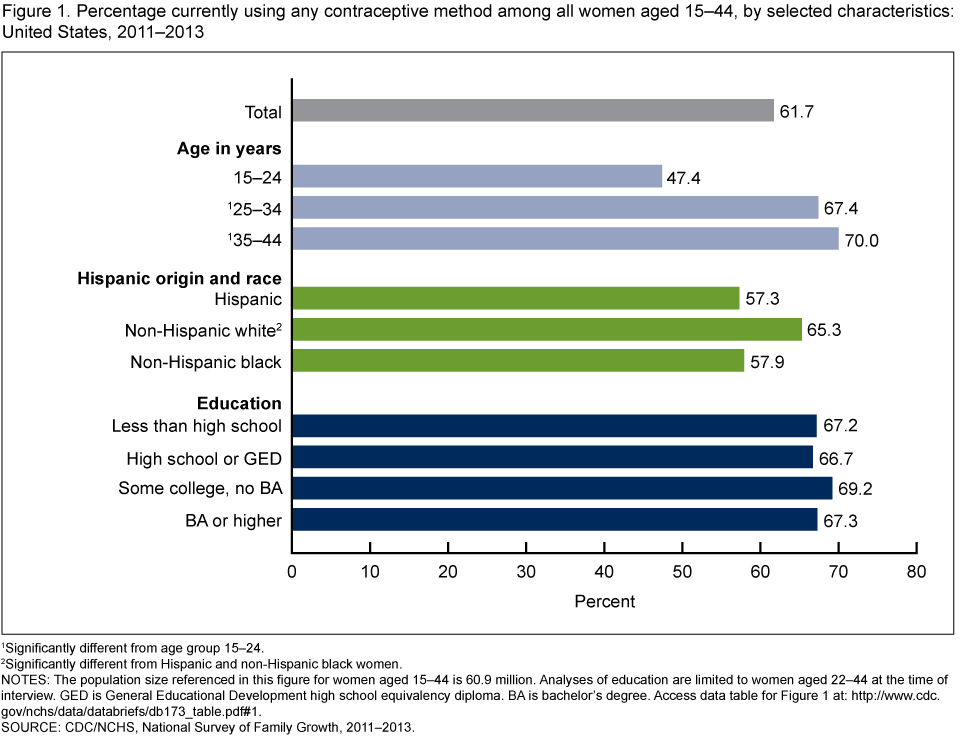Current Contraceptive Status Among Women Aged 15–44: United States, 2011–2013
Posted on byNearly all women use contraception at some point in their lifetimes, although at any given time they may not be using contraception for reasons such as seeking pregnancy, being pregnant, or not being sexually active. Using data from the 2011–2013 National Survey of Family Growth on contraceptive use in the month of the interview, a new NCHS report provides a snapshot of current contraceptive status among women aged 15–44 in the United States.
In addition to describing use of any method by age, Hispanic origin and race, and educational attainment, patterns of use are described for the four most commonly used contraceptive methods: the oral contraceptive pill, female sterilization, the male condom, and long-acting reversible contraceptives, which include contraceptive implants and intrauterine devices.
Key Findings from the Report:
- In 2011–2013, 61.7% of the 60.9 million women aged 15–44 in the United States were currently using contraception. The most common contraceptive methods currently being used were the pill (16.0%), female sterilization (15.5%), male condoms (9.4%), and long-acting reversible contraceptives (7.2%).
- Use of long-acting reversible contraceptives was higher among women aged 25–34 (11.1%) compared with women aged 15–24 (5.0%) and aged 35–44 (5.3%).
- Current condom use was similar across the three Hispanic origin and race groups shown in this report (about 9%).
- Current use of female sterilization declined, and use of the pill increased with greater educational attainment. Use of long-acting reversible contraceptives was similar across education, about 8%–10%.
Posted on by


